Pre-Race: A Beautifully Hard (Gravel) Bike Race
October 1, 2025
Words by Stuart Downie
Photos by Bea Berlanda, Liz Seabrook, Matt Grayson, Michael Drummond and Tomás Montes
A BEAUTIFULLY HARD (GRAVEL) BIKE RACE
Could we be any more nostalgic for nostalgia right now? Spinal Tap 2 is happening after 40 years, there’s not one but two Alien projects on the go – and one of them is basically childhood bedtime favourite Peter Pan – Superman is back to his comic book roots in bright red trunks. Bruce Springsteen got his biopic, Bob Dylan got another. Oasis reformed and sold out stadiums around the world with a peak capitalism tiered pricing system. But what’s this all got to do with a beautifully hard bike race?
Well, for one, what is an ultra race if not the ultimate antithesis: an invitation to live firmly in the moment. Of course, it's also about looking forward – literally and figuratively. But while we’re rosily regarding those rose-tinted spectacles we may as well take stock quickly. Coming into its fifth edition, Trans Pyrenees cannot be considered anything other than a staple on the racing calendar. It’s not just TCR’s younger sibling. Some might say it’s cooler than its older brother, even if that brother wrote the songbook when it comes to ultra racing.

Ultra cycling has captured the attention of the bike world well and truly. While we’re not yet into second phase cinematic universe reboot territory, we do need bike races to evolve and we do have an undeniable fondness for spandex. And this is not just change for change’s sake, but an opportunity to grow up – meaningfully. This is not a sophomore album situation. We’re already past that. This is a challenge to the organisers to put up a race that’s interesting and different and compelling when there’s so much choice out there.
What is the Trans Pyrenees Race? It is an ultra in the mountains between France and Spain, and in the stable of Lost Dot races it has – to date – been something of an ode to over a century of road racing in the area. Until now, it has been possible to race the entire thing on tarmac, if you so desire. But times they are a-changing. Is this a gravel glow up? Let’s find out.

The premise remains the same – we start on one coast, race to the other, and return via the Raid Parcours that’s a Pyrenean grand degustation. If you don’t love and/or hate the Pyrenees, you will. The route is made up of fixed Parcours, free-route sections where riders choose their own adventure, and a series of mandatory Control Points along the way.
DAVID TELLS US ABOUT GRAVEL
Where before the route would tempt riders off-road with detours that could save distance and elevation if not time, this year the fixed Parcours – aside from the Raid – are all gravel, which means this is the first edition that could not be ridden all on the road. But who better to get to grips with the new offering than Race Director David Ayre:
“As a team, we were having discussions around the shape of the race, looking at different permutations – as we do every year. And one of the things that we'd spoken about was the fact that we often go and ride lots of really, really beautiful off-road segments.
The format of TPR for previous editions had always been to incentivise going over those bits rather than mandating them. There were certain bits, while beautiful and hard, where it would have been difficult to incentivise them in the broad shape of the race. To mark the fifth edition of TPR, we thought it would be fun to flip that on its head and make sure that everyone experiences these beautiful portions of off-road riding that we found over multiple years of doing these recces.”

Covering these races you regularly hear from the riders that certain sections end up being unexpectedly beautiful. The team at Lost Dot have spent years on this race, planning, riding, running and gathering feedback from riders. Making beautifully hard bike races is an ongoing process.
ON SAN SEBASTIAN AND THE BASQUE COUNTRY
This year the race starts – for the first time – in San Sebastian. We’re back in the Basque Country albeit skipping the border, which means a return to the Raid Parcours being ridden East to West. What inspired this new start location?
“Having had a start in Biarritz and two in Saint-Jean-de-Luz, and also taking in a beautiful bit of parcours in Jaizkabel on TPR last year, we are definitely drawn to the Basque country. It’s emblematic of TPR in many respects. The passionate intensity, that feeling when you're there, the sheer variety of the terrain. You can be in an urban environment then very quickly out into rolling hills, then you’re in the Pyrenees. It's a spectacular entrance point for a race, and a really nice way to finish it as well.
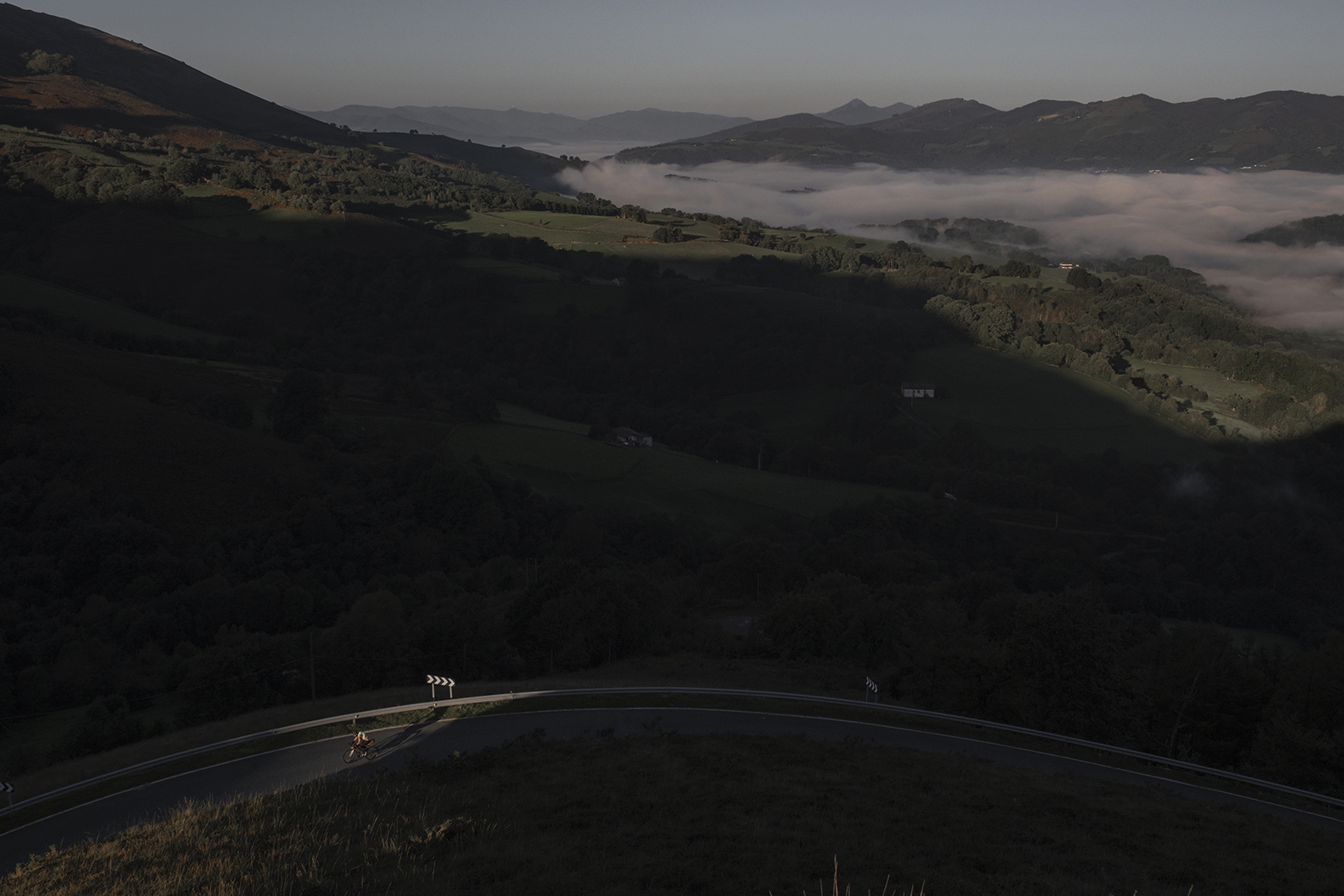
It's nice to take it over the border from France to Spain, giving us a fresh perspective on some well trodden areas, and exploring different bits of them. So even if someone has done previous editions of TPR that started over that end of the mountain range, they'll be able to come here and walk away from it thinking, wow, that felt quite different.”
RIDERS TO WATCH
The route is but one component. The riders that turn up make it a race, and with the addition of gravel we’re seeing a change in the field – but also the return of some mainstays. David lets us in on a few of the riders he’s keen to see line up:
“Tim de Witte is coming to TPR with two TCR podium finishes under his belt, making him a very strong prospect in the mix. We have Thomas Boury who has podiumed at Atlas Mountain Race in the past, another very strong off-road rider with lots of experience.
“We also have Jamie Lowden, who led TPRNo2 before having to scratch near Tarrascon. He came back for TPRNo3 and set an absolutely blistering time across the Raid Parcours to make up a whole heap of places. This year he’s coming back with a bit more kind of off-road riding experience under his belt. He's clearly incredibly fit and fast.”
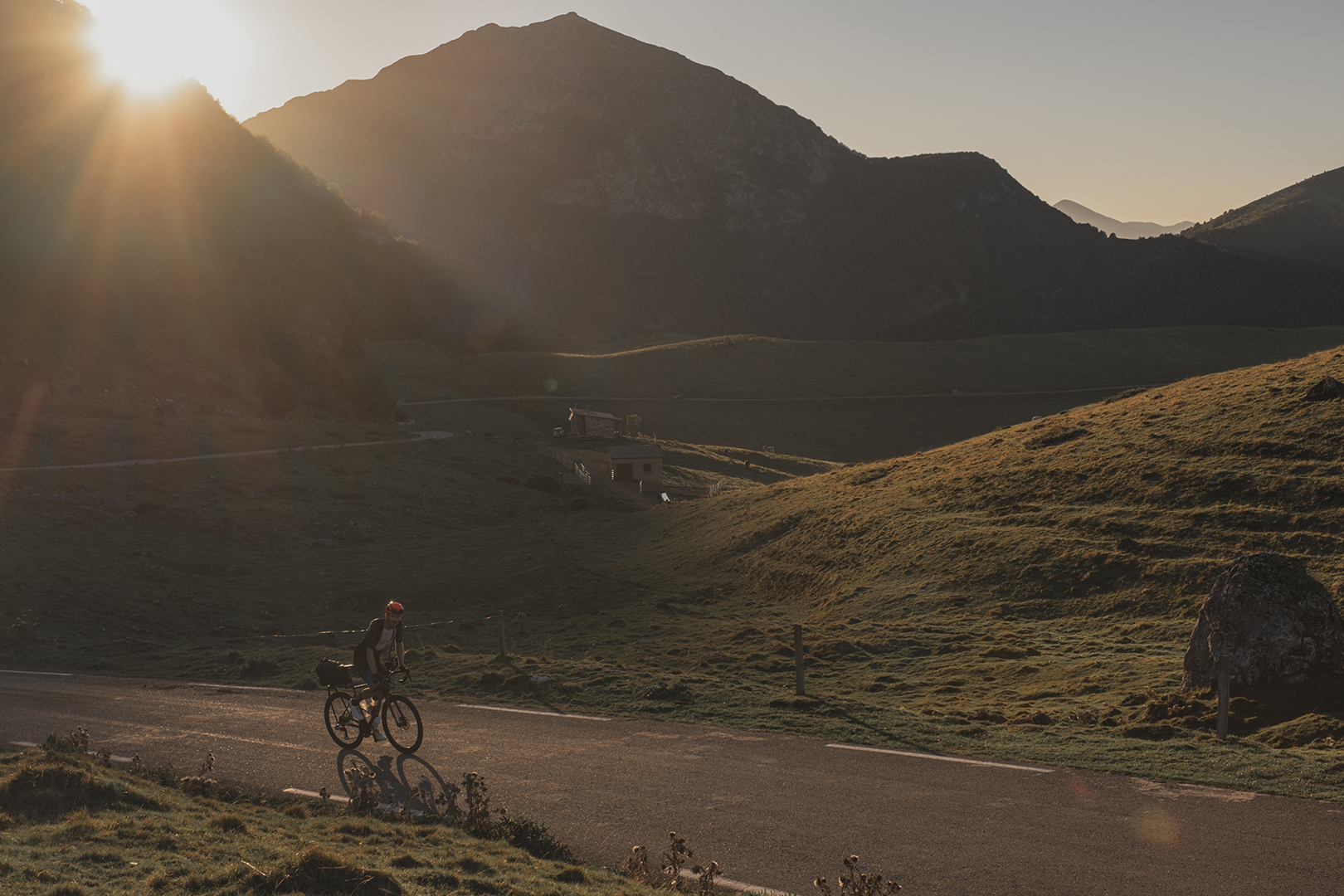
Jamie works with Visma–Lease a Bike as an aero specialist – expect his kit and bike position to be absolutely dialled.
“In the women's field there's Nicole Van Battenberg. Very experienced, very fast. Nicole completed Race Around Rwanda earlier in the year, where she finished ninth overall. There is Helene Fromenty, who has recently completed Silk Road Mountain Race, and we've also got Anna Linden coming, a TCR Veteran who’ll be on our green leader board having traveled sustainably to make a quick double traverse of the Pyrenees at TPRNo5, no doubt.”
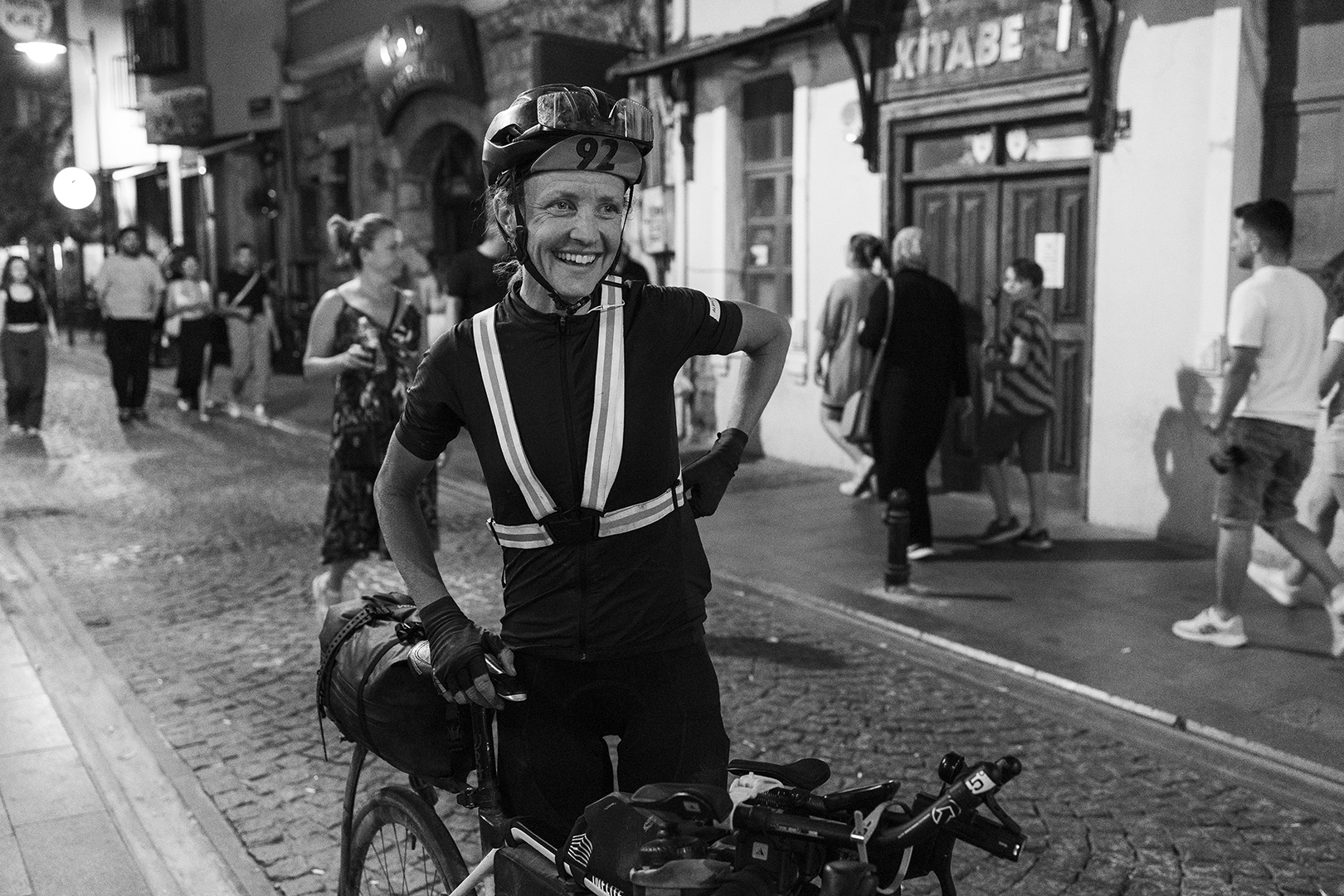
GREEN LEADERBOARD AND LOW CARBON TRAVEL FUND
Traveling sustainably is of course a cause that Lost Doit is dedicated to. Race Coordinator Andrew Phillips explains:
“For the last few years we've been doing a lot of work to try and reduce the carbon footprint of our races. The vast majority of that comes from riders flying to and from the race, so what we've done for TPR and TCR is introduced a green leaderboard for those who travel overland.”
The incentives don’t end there, though. Reducing emissions is not always easy (or even possible, in a few cases) but for those who have access to low carbon travel but perhaps not the means available, there’s help on hand:
“Lost Dot has a Low Carbon Travel Fund, which we introduced to help those who wouldn't otherwise be able to afford to travel overland. We award grants of £250 to help bridge the gap between train and bus travel and the cost of an airfare.”
How has this fund changed Lost Dot’s races over the last few years?
“We've seen loads of positive change. It's been amazing over the last few years to see the growth in numbers of riders taking flight-free options. This year almost 50% of riders are traveling overland to and from the race, which is amazing to see. It's very possible within Europe, and not just that, it can be a really fulfilling choice. Most riders who do it find that they get a lot more out of the experience, and that sense of adventure of the journey having begun when the race starts really begins as soon as you leave your front door.”
RIDER INTERVIEWS
In the run up to the race, we spoke with Helene Fromenty, Atlas Mountain Race veteran, a rider with more than one link to the region – and bike racing in France.
“ I'm a radio journalist, so normally I ask the questions! I work for Radio France, they're French Public radio, and every year they offer to some journalists in the network to cover the Tour de France. My boss on my local radio knows I'm into cycling, he suggested that I joined the team for the Femmes. This was my first time working, and it was super exciting.”
For those who don’t follow WorldTour racing, this year’s edition of the Tour de France Femmes was won by Frenchwoman Pauline Ferrand-Prévot, the first time a French national has won the Tour de France since Bernard Hinault won the men’s race in 1985—42 years ago—so it was something of a big deal for a nation that hosts cycling’s biggest professional race. Without getting too distracted, it’s worth adding that Ferrand-Prévot is a real phenom in cycling, having been cyclocross, cross country mountainbike, road and gravel world champion in a professional career that spans 13 years – more than worthy of a momentary detour and doff of the cap.
But not only has Helene toured the country and its peaks in official capacity with le Tour, she’s also familiar with the Pyrenees from her youth.
“ My family has a house there – I've been every summer since I was a child. There is not just one Pyrenees in my eyes first, it's super diverse. The mountains are so incredible. Way more remote and wild than in the Alps, I would say. It's beautiful – I'm super excited to go there. Back when I was going there with my family in the summer, I was not a cyclist yet, so I know the Pyrenees from hiking and wandering around with my cousins and my sister. Riding there will be super nice.”
Given what David’s said about the route, there will be some hiking in store for Helene here too. Her statement echoes the words of TPRNo4 finishers, local trail-running legends and proud Basque boys Tristan and Clement Janmart who would enigmatically announce mere days into the race: “Now we are in the real Pyrenees!”

So what does Helene mean that there’s more than one Pyrenees? How does it break up?
“ The western part, in the Basque country, there's this really strong, local identity. The middle is more remote, there’s skiing in winter and MTB. Then the eastern part has better weather, on the Mediterranean Sea. So at least there are three… but I'm not an expert. I don't live down there. But it’s so various, from one valley to another. Everybody can find what they want in the Pyrenees.”
We hope Helene finds what she wants, including whether or not her theory of three is correct.
Joining us for the first time at TPRNo5 is Lucas Strittmatter, who earlier this year rode Atlas Mountain Race as a pair with TPRNo4 winner Robin Gemperle, going well until Lucas was forced to scratch with the dreaded Shermer’s Neck (say it quietly, or not at all). Lucas and Robin are old friends, having raced XC together with the Scott Development Team.
Previously, Lucas finished 8th at TCRNo10, but on returning this year he was disappointed to have to scratch. This – amongst other things – has taken a toll on his outlook, and Lucas admits to struggling with his mental health in the past year.

“My goal was to really compete within the best. Now the goal is only to finish because, yeah, I couldn't. I scratched and I want to get back the joy of riding bicycles. Of course there is the ambition to ride fast. But yeah, mainly to find the joy.”
When you’re struggling, having someone to confide in always helps. But it must be a double edged sword when the person you’re talking to is Robin Gemperle. Lucas spoke with Robin, who had followed the TCRNo11 attempt and seen how Lucas had struggled at the time, and they both ultimately agreed that the important thing would be to finish: “I thought to myself, it’s the best option because I don't want to finish on a low with the scratch.”
And so the beautiful and varied Pyrenees offers a chance to reset, albeit with the added benefit of being shorter – comparatively – and in a new format that suits his skillset.
“ I am really looking forward to the gravel, maybe I can catch up some time during these sectors. But I want to prove to myself that I'm capable of doing ultras. Next year I want to do more, but maybe only shorter distances. So I’ll decide with the Transpyrenees, see if it's good for me.”
So Lucas has a lot riding on this race, and we wish him the best in it.
Another rider looking to the Pyrenees for some form of redemption is TPRNo4 rider Leyla Serbouti. Leyla scratched after a crash that saw her suffering with a mild concussion. Rather than heading home early, Leyla came to Girona to soak up the atmosphere where she made a series of incredible illustrations of the experience (find them on Leyla’s Instagram).
“After last year's TPR I already knew I wanted to come back. Firstly because I enjoyed myself very much on the four days that I raced, and also because I feel like I have unfinished business. I would really love to finish it this year – within GC it would be even better! Also, I really love the Pyrenees, and I love cycling there. The route goes through some of my favorite places on Earth, so it's the perfect race for me.”
.JPG)
In spite of knowing the region, there are parts that will be experienced anew on Leyla’s return:
“I would really love to ride on the Raid Parcours and go through these epic climbs. I didn't get that far last year and was really sad about it. Plus, some of the mandatory parcours on the Spanish side are looking amazing. The first parcours Mallos de Riglos looks beautiful – I would love to get there at sunset to see it under the sunset lights.”
Beautiful – so there are plenty of reasons to look forward to a race like TPR, even for those at home following Lost Dot’s renowned photographers who’ll be out there on the road, looking for those same vistas.
After finishing 70th in TCRNo10, Alvin Escajeda is travelling from LA to add another Lost Dot cap to his collection.
“ I've been thinking about TCR every single day since I finished. There's been at least a moment every day where I get like a little flashback or just think about being out there. It just left such an impression that I wanted to get stuck in again, you know?”
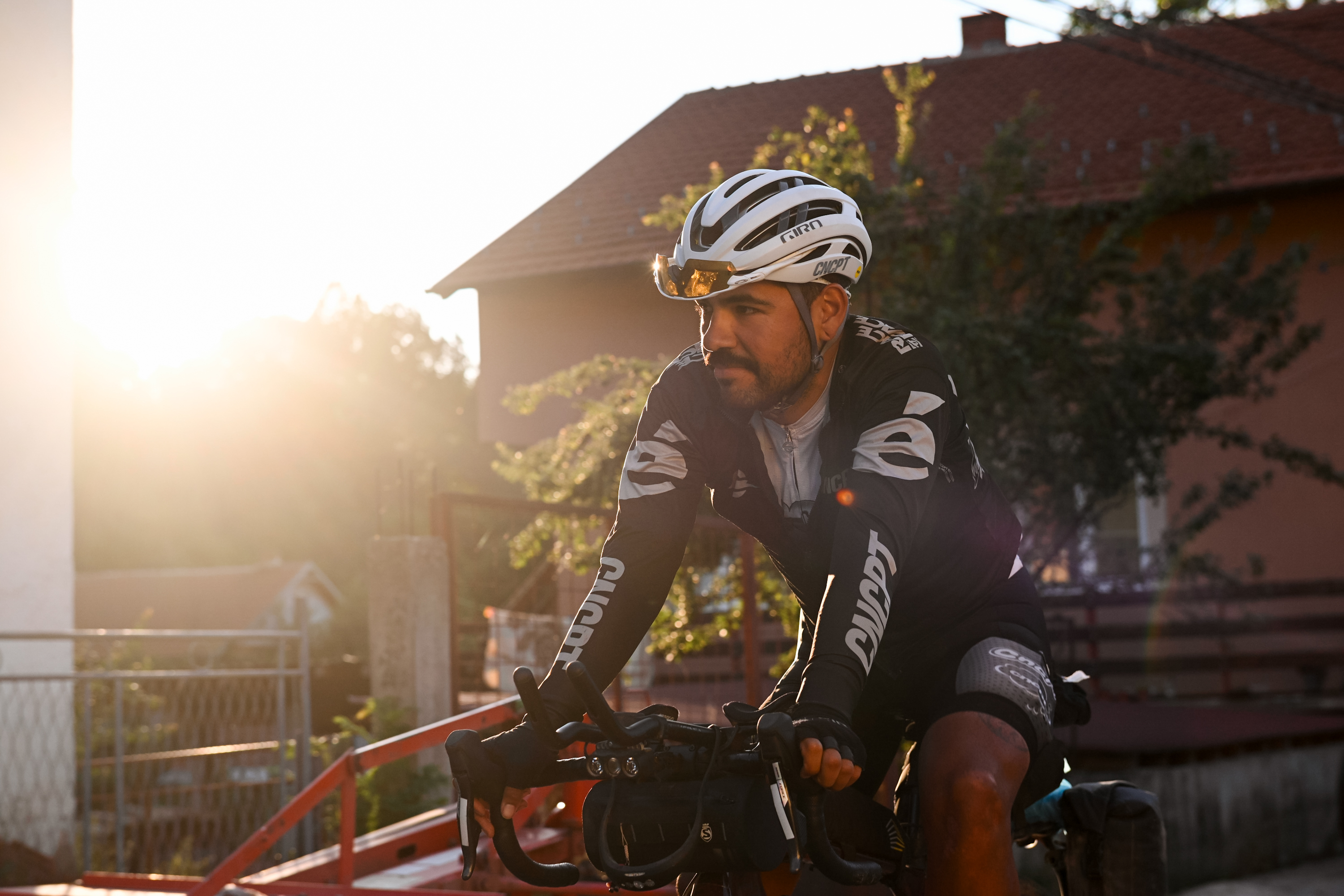
“This just seemed like a good opportunity. And I like the way Lost Dot does things. Strict, but it's strict for a good reason. There's not a lot of free routed races, which is also its own. Um, kind of surprised and, and I've never been to the Pyrenees, so those things are just super appealing.”
“ Having the ability to just go unplug and play bikes for a while is such a privilege. Just getting stuck in, that's one of the big things I missed. It usually takes a couple of days to get into that kind of animal brain. It's just so cool when you're just in a different mode, you're just so singularly focused on one thing. It's really cool to feel that way and be able to live that, just riding bikes all day. Eat, ride, pedal. You know?”
Lastly, we couldn’t go without mentioning Sergey Shulubin, who returns for his fifth (yes, he has ridden every edition of TPR) outing in the Pyrenees. Disaster struck in the run up to the race when his beloved fixed gear bike (yes, he races TPR on a fixed gear) was stolen. In a beautiful moment, the community came together to support him in replacing his lost equipment, and we are looking forward to seeing him on the start line, torn between wistfully wishing he may have chosen something that doesn’t require a 15mm box spanner to shift gears and stoically hoping he’s stayed true to the spirit of his spartan setup. A true inspiration and a unique competitor.

VOLUNTEERS
Lost Dot—like the ideal bikepacking equipment—go the distance on a minimal setup. A race is made up of the route and the riders, but that’s not all, not by a long way. Race Director David Ayre explains:
“Our volunteers are a really important part of the race. We're lucky enough to have lots of people who are interested in helping to support the running of the race, both in person, out on the road, and also from home as well. At registration and at the various control points along the way, we'll have teams of volunteers working round the clock. With TPR being a shorter race than say a Transcontinental, it means more of a small, intense burst of activity.”
So what does that mean for the volunteers?
“Teams of five or six will have maybe two and a half days of a control point being open at most. One of the things I really enjoy seeing is the amount of volunteers that want to come back year on year – we have Simon Everett coming back for the fourth time this year. I think people see it as an opportunity to really enjoy the mountain range, to do a little bit of riding themselves, but ultimately giving back to a community that gives something to them is a really beautiful thing. We’re very, very thankful for them.”
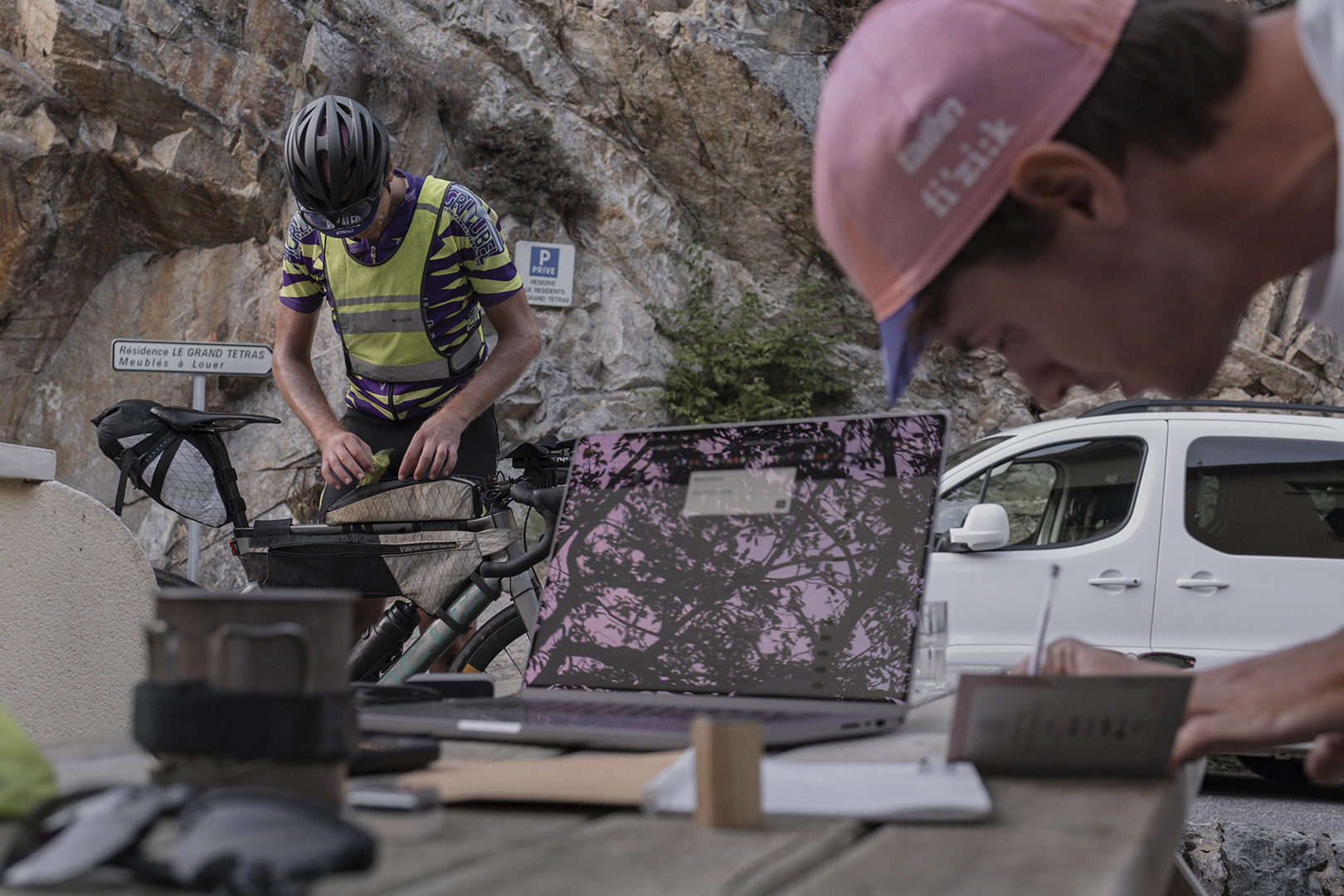
But it’s not just volunteers out there on the road. There’s an extremely motivated and capable team tracking the race from home.
“Many of these people are ultra racers themselves, or perhaps they’re interested in learning a little bit more about it as well. There’s many returning volunteers who have volunteered across all of our races across the calendar year as well.
There's something really remarkable to see how diligently they take to that role, how much they want to play a part in making sure that it's a level playing field and that the riders out on the road can trust in the fact that we're going to do our very best when it comes to the results, making sure we're accounting for everything in the best way possible.”
MIKE HALL BURSARY
TPRNo5 sees its largest field ever, a testament to Lost Dot’s race and to the growth of the sport. What was the vision of one individual—Mike Hall—has grown into something quite remarkable, and his legacy lives on in the growth of the sport. To commemorate his pioneering vision, Lost Dot have a bursary in his name. Race Director David Ayre explains:
“The objective of the Mike Hall Bursary is to make sure that the only barrier to participation is your willingness rather than your financial means, opening it up to riders who wouldn't otherwise be able to take part.”
Recipients receive financial aid for race-related costs, cycling kit and equipment from Lost Dot’s great race partners, along with support from an experienced mentor and access to a coach to build a training plan that will help them consider everything they need to for a successful race in the run up to the race.
Lost Dot believes that the differentiator in adventure racing should be the aptitude, athleticism and attitude of the individuals, not their budget, making their races as accessible and inclusive as they can be. We’ll hear more from the bursary riders in the run up to the race itself.
TPRNo5 is a unique prospect in the ultra world. Situated in one of cycling’s homelands, firmly established and drawing talent from across the world of ultra cycling. Like any ultra it’s a significant undertaking from a dotwatching perspective, but this race is a little easier to get to grips with if you’re new to the sport. We’re here to guide you through – join us in the Pyrenees, bookmark the Follow My Challenge page, follow the Instagram account, subscribe to the podcast, and prepare for a beautifully hard bike race.
